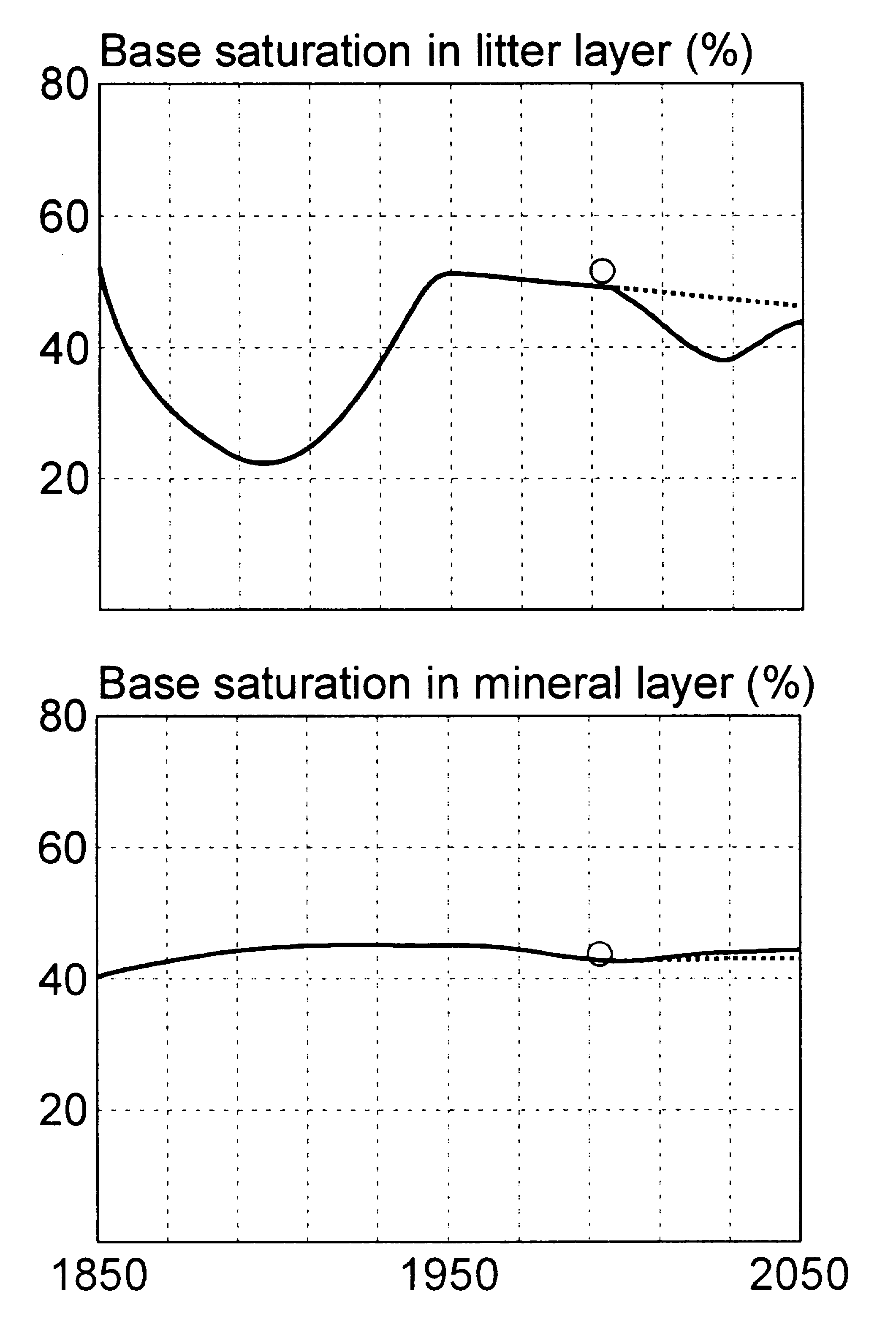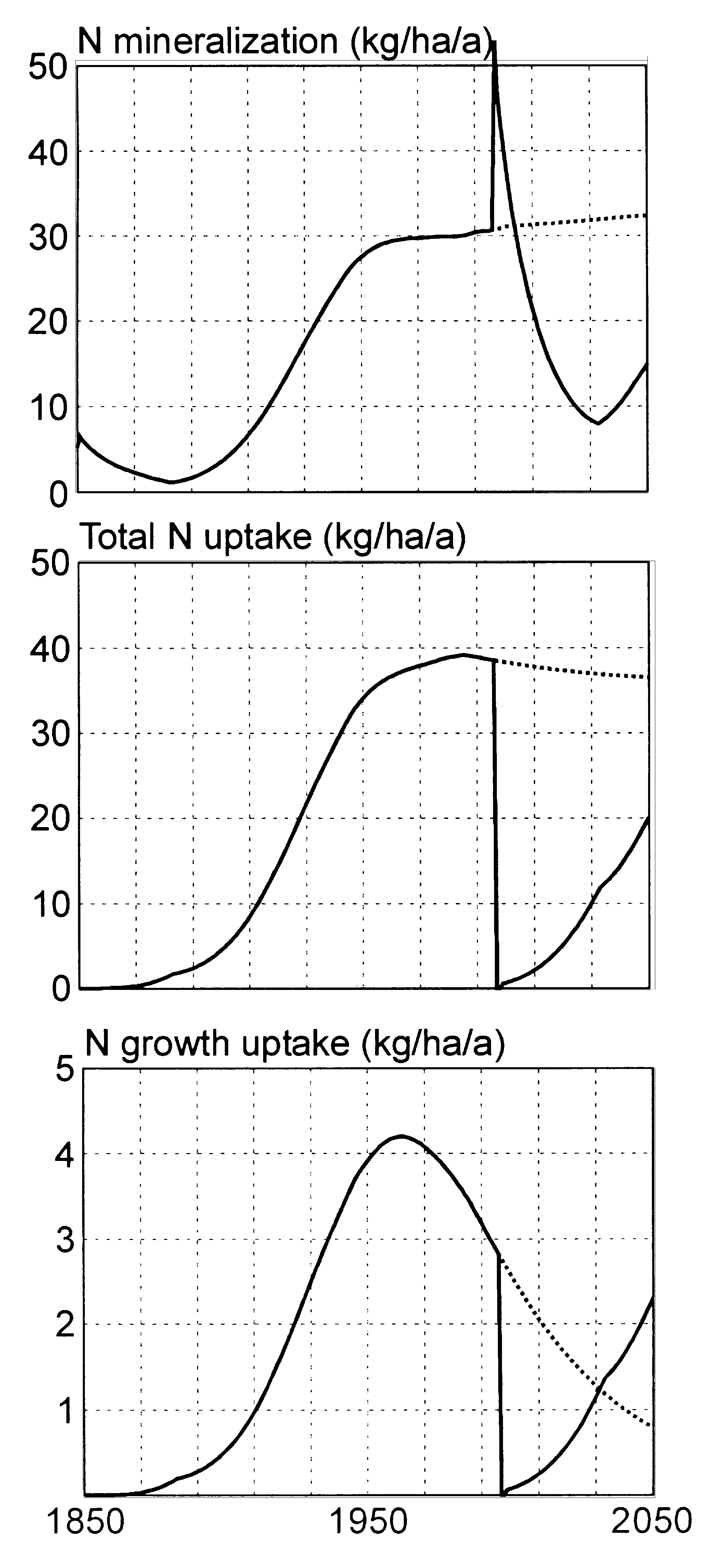

SMART2 a simple dynamic soil model developed to analyse the effects of atmospheric deposition and nutrient cycling on terrestrial ecosystems, was applied to Kangasvaara catchment. Two scenarios of future deposition of sulphur and nitrogen are considered. In the Current Reduction Plan (CRP) scenario the future deposition of sulphur is derived from 2010 emissions according to the Second Sulphur Protocol (UN/ECE 1994) and the deposition of nitrogen is assumed to stay at the present level. In the lower Maximum Feasible Reductions (MFR) scenario the deposition of sulphur is based on maximum technically feasible reductions and the deposition of nitrate declines 30% by the year 2010. In addition to the deposition scenarios, the effects of final cutting, carried out in parts (31%) of the catchment in 1996, on the runoff chemistry are investigated.
The base saturation of the mineral layer is fairly stable (Figure 1). The emission reductions under the MFR scenario show hardly any impact over the next 50-60 years, since the deposition values according to the reference (CRP) scenario are already among the lowest in Europe.
Figure 1 Response of the soil in the non-cut area of the Kangasvaara catchment to the two deposition scenarios: CRP (solid lines) and MFR (dotted lines). Measured values are indicated by circles.

The final forest cutting in part of the catchment significantly alters the internal nitrogen cycling (Figure 2). The most pronounced effect is the reduction of total forest N uptake to practially zero in the cut areas.
Figure 2 Response of the soil in the Kangasvaara catchment to the CRP scenario for the un-cut (dotted lines) and cut (solid lines) areas. Measured values are indicated by circles.

At the same time cutting residues leads to peak in the N mineralisation. After some years mineralisation decreases because there is very little new litter fall. After cutting the model predicts a pulse of nitrate and base cations in the stream water. These pulses start to decrease immediately as mineralisation slows down and uptake increases. It takes about 30-40 years to reach levels of the undisturbed forest (Figure 3).
Figure 3 Response of the soil in the Kangasvaara catchment to the CRP scenario for the un-cut (dotted lines) and cut (solid lines) areas.
